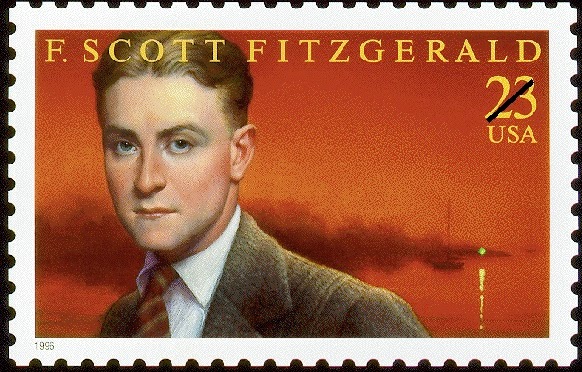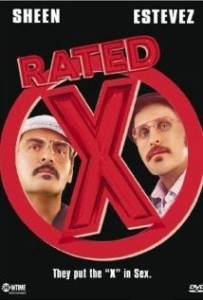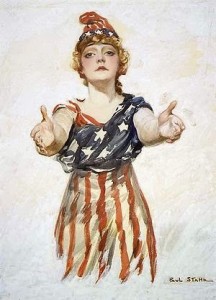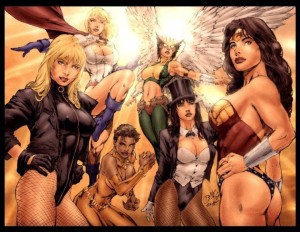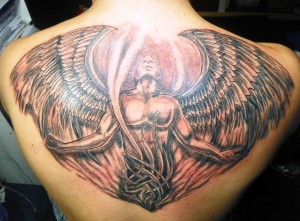This week I’m writing a scene set in one of my favorite places in New York, the American Museum of Natural History. I’ve visited the museum many, many times in the past, but I went there again last weekend to answer a novelistic question: What would be a plausible way to break into the building? After much snooping around I came up with a plan. But I’m not going to give it away here. You’ll just have to read the book. (It’ll probably be published late next year or early 2016. Assuming I finish it, of course.)
Monthly Archives: September 2014
Reader Friday: Are Physical Books Like the Dodo Bird?
Guest Author Stacy Green on Creating a Sociopathic Character
Jordan Dane
@JordanDane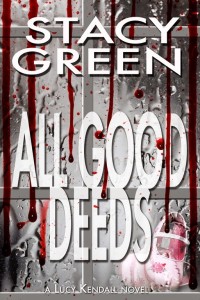
Swiss psychologist Carl Yung believed our conscious minds possessed four major archetypes: the self, the shadow, the anima, and the persona. Naturally, as a thriller author, the shadow interests me the most.
The shadow holds our repressed ideas and desires, our weaknesses and the darker side of our psyche. Some people it is this shadow side that comes into play when seemingly good people go bad.
But what about the sociopath? I’m not talking about the serial killers we’ve all studied (I refer to those as psychopaths), but those individuals who walk among us every day with their own agenda, no remorse, and a frightening ability to manipulate everyone they come in contact with. Are these people simply more controlled by their shadow side? More importantly, what’s my shadow side like?
In creating my character, Lucy Kendall, I studied sociopaths. Lucy doesn’t believe she’s a bad person and she doesn’t even consider herself a killer. After all, her targets are repeat pedophiles who keep being turned out by the justice system. She’s in the right, and she’s doing society a favor.
Of course, anyone who believes that has to have some kind of sociopathic traits, right? In research for and creating Lucy, I started thinking about my own shadow side and exactly how close I was to the dark side of life.
According to the ICD 10, the following are considered sociopathic traits. Presence of three or more qualifies for a diagnosis of antisocial personality disorder, aka as sociopathy.
1. Callous unconcern for the feelings of others.
2. Gross and persistent attitude of irresponsibility and disregard for social norms, and obligations.
3. Incapacity to maintain enduring relationships, though having no difficulty in establishing them.
4. Very low tolerance to frustration, a low threshold for discharge of aggression, including violence.
5. Incapacity to experience guilt or to profit from experience, particularly punishment.
6. Markedly prone to blame others or to offer plausible rationalization for the behavior that has brought the person into conflict with society.
The DSM IV is another diagnostic tool and defines sociopathic traits as:
1. Failure to conform to social norms with respect to lawful behaviors as indicated by repeatedly performing acts that are grounds for arrest
2. Deception, as indicated by repeatedly lying, use of aliases, or conning others for personal profit or pleasure
3. Impulsiveness or failure to plan ahead
4. Irritability and aggressiveness, as indicated by repeated physical fights or assaults
5. Reckless disregard for safety of self or others
6. Consistent irresponsibility, as indicated by repeated failure to sustain consistent work behavior or honor financial obligations
7. Lack of remorse as indicated by being indifferent to or rationalizing having hurt, mistreated, or stolen from another
A) The individual is at least age 18 years.
B) There is evidence of conduct disorder with onset before age 15 years.
C) The occurrence of antisocial behavior is not exclusively during the course of schizophrenia or a manic episode. SOURCE
So here’s the thing: I don’t fit that list, thankfully. But I’ve certainly had my moments when I realize I’m incredibly callous and most people would consider me a terrible person if they knew what I was really thinking.
Example: my daughter is a competitive swimmer, and she is able to practice in a very new and nice facility our tax dollars paid for. And every practice, when I see swim lesson kids taking up lanes in the pool, I get angry. I see these kids as space fillers who crowd the pool for team kids who need room to move. And I have little compassion for the parents who equally crowd the window space and get excited when little Johnny splashes a few feet and doesn’t drown. It outright annoys me. And even worse, I’m sure most people within my vicinity know I’m irritated because I certainly don’t look friendly.
What a jerk, right? How could I be so unfeeling toward these people who are excited for their kids and have just as much of a right to be there as I do? Thankfully it’s a feeling that subsides as the hour goes on.
Perhaps that’s my shadow side seeping through. The side that’s easily irritated with people and doesn’t have the patience to keep its mouth shut at certain times. The side that has no problem glaring daggers at a strange kid misbehaving in public. The side my husband affectionately refers to as Pissy Stacy. I don’t have the answer, but I bet if you take a moment to look deep inside, you can find something of yourself on this list.
Perhaps we should be afraid of our own shadows after all.
For discussion: Have you ever battled your darker shadow side?
ALL GOOD DEEDS (LUCY KENDALL #1) is now available at Amazon HERE or through more purchase links HERE.
About the author
Born in Indiana and raised in Iowa, Stacy Green earned degrees in journalism and sociology from Drake University. After a successful advertising career, Stacy became a proud stay-at-home mom to her miracle child. Now a full-time author, Stacy juggles her time between her demanding characters and supportive family. She loves reading, cooking, and the occasional gardening excursion. Stacy lives in Marion, Iowa with her husband Rob, their daughter Grace, and the family’s three obnoxious but lovable canine children.
Website: www.stacygreen.net
Amazon Author Page
Facebook Stacy Green, Author
Twitter @StacyGreen26
The Seven Deadly Sins of Prologues
Today I welcome author, blogger and fellow ITW member, Kristen Lamb, to TKZ. I asked Kristen to share her thoughts on the pros and cons of prologues. Enjoy! Joe Moore
————————
To prologue or not to prologue? That is the 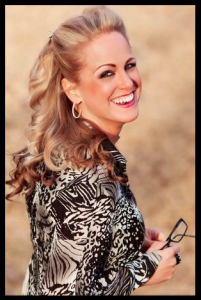 question. The problem with the prologue is it has kind of gotten a bad rap over the years, especially with agents. They generally hate them. Why? In my opinion, it is because far too many writers don’t use prologues properly and that, in itself, has created its own problem.
question. The problem with the prologue is it has kind of gotten a bad rap over the years, especially with agents. They generally hate them. Why? In my opinion, it is because far too many writers don’t use prologues properly and that, in itself, has created its own problem.
Because of the steady misuse of prologues, most readers skip them. Thus, the question of whether or not the prologue is even considered the beginning of your novel can become a gray area if the reader just thumbs pages until she sees Chapter One.
So without further ado…
The 7 Deadly Sins of Prologues
Sin #1 If your prologue is really just a vehicle for massive information dump…
This is one of the reasons I recommend writing detailed backgrounds of all main characters before we begin (especially when we are new writers). Get all of that precious backstory out of your system.
This is a useful tactic in that first, it can help us see if a) our characters are psychologically consistent, b) can provide us with a feel for the characters’ psychological motivations, which will help later in plotting.
I have a little formula: background–> motivations –>goals–>a plan–>a detailed plan, which = plot and c) can help us as writers honestly see what details are salient to the plot.
This helps us better fold the key details into the plotting process so that this vital information can be blended expertly into the story real-time.
Many new writers bungle the prologue because they lack a system that allows them to discern key details or keep track of key background details. This makes for clumsy writing, namely a giant “fish head” labeled prologue. What do we do with fish heads? We cut them off and throw them away…unless you are my mother’s Scandinavian family and then they make soup *shivers*.
Sin #2 If your prologue really has nothing to do with the main story.
This point ties into the earlier sin. Do this. Cut off the prologue. Now ask, “Has this integrally affected the story?” If it hasn’t? It’s likely a fish head masquerading as a prologue.
Sin #3 If your prologue’s sole purpose is to “hook” the reader…
If readers have a bad tendency to skip past prologues, and the only point of our prologue is to hook the reader, then we have just effectively shot ourselves in the foot. We must have a great hook in a prologue, but then we need to also have a hook in Chapter One. If we can merely move the prologue to Chapter One and it not upset the flow of the story? Then that is a lot of pressure off our shoulders to be “doubly” interesting.
Sin #4 If your prologue is overly long…
Prologues need to be short and sweet and to the point. Get too long and that is a warning flag that this prologue is being used to cover for sloppy writing or really should have just been Chapter One.
Sin #5 If your prologue is written in a totally different style and voice that is never tied back into the main story…
Pretty self-explanatory.
Sin #6 If your prologue is über-condensed world-building…
World-building is generally one of those things, like backstory, that can and should be folded into the narrative. Sometimes it might be necessary to do a little world-building, but think “floating words in Star Wars.” The yellow floating words that drift off into space help the reader get grounded in the larger picture before the story begins. But note the floating words are not super-detailed Tolkien world-building.
They are simple and, above all, brief.
Sin #7 If your prologue is there solely to “set the mood…”
We have to set the mood in Chapter One anyway, so like the hook, why do it twice?
The Prologue Virtues
Now that we have discussed the 7 Deadly Sins of Prologues, you might be asking yourself, “So when is it okay to use a prologue?” Glad you asked.
Virtue #1
Prologues can be used to resolve a time gap with information critical to the story.
Genre will have a lot to do with whether one uses a prologue or not. Thrillers generally employ prologues because what our hero is up against may be an old enemy. In James Rollins’s The Doomsday Key the prologue introduces the “adversary” Sigma will face in the book. Two monks come upon a village where every person has literally starved to death when there is more than an abundance of food.
Many centuries pass and the very thing that laid waste to that small village is now once more a threat. But this gives the reader a feel for the fact that this is an old adversary. The prologue also paints a gripping picture of what this “adversary” can do if unleashed once more.
The prologue allows the reader to pass centuries of time without getting a brain cramp. Prologue is set in medieval times. Chapter One is in modern times. Prologue is also pivotal for understanding all that is to follow.
Prologues are used a lot in thrillers and mysteries to see the crime or event that sets off the story. Readers of these genres have been trained to read prologues and generally won’t skip. The serial killer dumping his latest victim is important to the story. It’s a genre thing. Yet, still? Keep it brief. Reveal too much and readers won’t want to turn pages to learn more.
Virtue # 2
Prologues can be used if there is a critical element in the backstory relevant to the plot.
The first Harry Potter book is a good example of a book that could have used a prologue, but didn’t (likely because Rowling knew it would likely get skipped). Therese Walsh in her blog Once Before A Time Part 2 said this:
J.K. Rowling’s Harry Potter and the Sorcerer’s Stone is told in a close 3rd person POV (Harry’s), but her first chapter is quite different, told when Harry is a baby and switching between omniscient and 3rd person POVs (Mr. Dursley’s and Dumbledore’s). Rowling may have considered setting this information aside as a prologue because of those different voices and the ten-year lag between it and the next scene, but she didn’t do it. The info contained in those first pages is critical, it helps to set the story up and makes it more easily digested for readers. And it’s 17 pages long.
This battle is vital for the reader to be able to understand the following events and thus would have been an excellent example of a good prologue. But, Rowling, despite the fact this chapter would have made a prime prologue still chose to make it Chapter One so the reader would actually read this essential piece of story information.
Food for thought for sure.
Yes, I had Seven Sins and only Two Virtues. So sue me. ![]() That should be a huge hint that there are a lot more reasons to NOT use a prologue than there are to employ one (that and I didn’t want this blog to be 10,000 words long).
That should be a huge hint that there are a lot more reasons to NOT use a prologue than there are to employ one (that and I didn’t want this blog to be 10,000 words long).
Prologues, when done properly can be amazing literary devices. Yet, with a clear reader propensity to skip them, then that might at least make us pause before we decide our novel must have one. Make sure you ask yourself honest questions about what purpose these pages are really serving. Are they an essential component of a larger whole? Or are you using Bondo to patch together a weak plot?
But, don’t take my word for it. Over the ages, I’ve collected great blogs regarding prologues to help you guys become stronger in your craft. These are older posts, but timeless:
Once Before a Time: Prologues Part 1 by Therese Walsh
Once Before a Time Part 2 by Therese Walsh
Agent Nathan Bransford offers his opinion as does literary agent Kristin Nelson
Carol Benedict’s blog Story Elements: Using a Prologue
To Prologue or Not To Prologue by Holly Jennings
If after all of this information, you decide you must have a prologue because all the coolest kids have one, then at least do it properly. Here is a great e-how article.
So if you must write a prologue, then write one that will blow a reader away. Take my First Five Pages class (below) and I can give you some expert perspective of whether to keep or ditch or if you want to keep your prologue, then how can you make it WORK?
What are some of the questions, concerns, troubles you guys have had with prologues? Which ones worked? Which ones bombed? What are your solutions or suggestions?
———————-
Kristen is the author of the best-selling book, Rise of the Machines—Human Authors in a Digital World in addition to the #1 best-selling books We Are Not Alone—The Writer’s Guide to Social Media and Are You There, Blog? It’s Me, Writer. Kristen is the founder of the WANA movement, the CEO of WANA International and creator of WANATribe, the social network for creative professionals. She is a contributing blogger for The Huffington Post and the official social media columnist for Author Magazine.
Follow Kristen on Facebook, Twitter at @KristenLambTX and on her regular author blog.
To contact Kristen, e-mail kristen at wana intl dot com.
Writer Drops a Toad on Agent
It was the closing day of a writer’s event. At the end of a breakfast session, an agent and a writer were wrapping up a session about the ongoing changes in the publishing industry, and how those changes affect writers.
During the Q and A, most of the discussion addressed strategies for writers who were not yet published. I raised my hand.
“I’m wondering about writers who have already been published,” I said. “how do you think the changes in the industry are affecting our strategies going forward?”
The agent looked confused. “What do you mean?” she asked.
“Well,” I said, “Many mid-list writers I know are interested in developing a revenue sharing model with publishers rather than signing traditional contracts. Or going the indie publishing route.”
It was as if a toad had leaped from my mouth. “Indie publishing?” the agent asked me. “You mean, self-publishing?”
“Right, but not vanity publishing,” I said, beginning to sweat. “I’m talking about writers who want to keep a greater share of revenue than they have under their previous contracts with legacy publishers.”
“Legacy publishers?” Now the agent looked truly horrified. “That word sounds like something that guy Konrath would say.”
JA Konrath, in case you don’t know, is a pioneer in self-publishing who successfully transitioned from legacy–excuse me, traditional–publishing. He’s known for criticizing the practices of publishers in his popular blog, The Newbie’s Guide to Publishing.
At this point I was prepared to dive into my coffee cup and drown myself, but the agent was just getting started.
I don’t remember her exact words, but they were something to the effect of “agents don’t want to give up their advances.”
Well, granted. But what about writers? What is best for us?
I had unwittingly stepped into a raging discussion that’s been swirling in the media-publishing world for months. A bit of background: there’s something of a class system in the world of writing. The mega-bestselling writers are the darlings of publishers. The rest of us, not so much. Unless your first book is a monster success, you are more or less sent to the servant’s quarters. It used to be that publishers would give a writer time to develop and gain a strong readership base. That is less often the case today. Midlist writers are being dropped; contracts are not being renewed. Advances are shrinking.
Then there’s Amazon, which offers writers–any writer–a decent percentage of each and every sale. Published writers who have been able to reclaim their backlist have been startled to discover that they can make good money from “new old” titles which had been languishing on the vine for years. The prices for indie ebooks are being set by…gasp…the writers. This process, along with the rise of indie publishing in general, is driving down the overall cost of ebooks.
Publishers don’t like to lower their ebook prices, and they’re fighting back. Amazon and publishers have gotten into several scrapes over pricing and distribution. Most recently, the tension boiled over into the Hatchette vs. Amazon kerfuffle. You can read more about that here. But the subtext of the fight is that journeyman writers suddenly have more options for publishing and getting paid for their work. These changes are putting pressure on the traditional publishing model, on pricing in particular.
I don’t have any strong beliefs about the merits of traditional versus indie publishing. I suspect that most published writers will become “hybrids,” pursuing the best available options. I do think that it is still better for unpublished writers to get traditionally published first–going through the process helps a writer develop her skills, learn valuable ropes, and establish a readership. But for writers who have previously been published and languished under the old system, the picture is different. If a previous book did not sell well, we’re haunted by those sales numbers forevermore. If it did sell, the publisher will collect the lion’s share of the book’s revenues, forevermore.
At the breakfast meeting that day, the agent wound up her response to me by saying, “You’re too early in your career to give up on traditional publishing.”
In fact, I’m not in any way giving up on traditional publishing. As a published writer who will have a new manuscript to market in the near future, I’m simply trying to figure out the best strategy for me. Not the best strategy for the publisher. Not for Amazon. Not for an agent. If traditional publishing gives me a good deal on my next book, I’ll break out the champagne. If not? I’ll go indie. I don’t have any agenda attached to exploring all the possibilities. As they said in The Godfather, “It’s not personal. It’s business.”
What’s in a List?
 Last week Publisher’s Weekly reported that the New York Times was going to revamp its bestseller lists (see article here) to include reporting on niche markets including travel, humor, family, relationships and animals as well as (on a rotating basis) other niche lists such as Politics, Manga, Graphic Novels, Food and Fitness.
Last week Publisher’s Weekly reported that the New York Times was going to revamp its bestseller lists (see article here) to include reporting on niche markets including travel, humor, family, relationships and animals as well as (on a rotating basis) other niche lists such as Politics, Manga, Graphic Novels, Food and Fitness.
Now, I’m just as happy as the next person to see books I love listed on bestseller lists – but isn’t this all going a little too far? I mean already have to read Facebook posts from authors about hitting every conceivable niche bestseller list for that day or hour on Amazon but now I have to puzzle over what it means to be a NYT bestselling animal book (which is, I assume, by topic rather than author – though I suspect my collie Hamish would love to be on this list!).
Isn’t our obsession with term ‘bestseller’ getting to the point where it is no longer meaningful?
Apart from the obvious kudos, I’m starting to wonder what many of these lists actually mean (especially since many don’t necessarily reflect what you think they reflect). The NYT list, for instance, has a fairly secretive methodology based on weekly sales from a sampling from selected retail outlets. Although this methodology been the subject of controversy, nonetheless, I think it’s safe to say that the NYT list is pretty influential! The mantle of ‘New York Times Bestseller’ is a much coveted title – even though many of us aren’t exactly sure what it means.
As I said before, I love seeing books from authors I admire on bestseller lists and I admit I can be influenced by said lists in terms of deciding which book to purchase. But I am getting a little jaded by these lists too – and the thought of having niche lists for topics such as fitness and family, seems too much. I would be far more interested in seeing a list that breaks down mystery, romance, science fiction genres – but even then it could get so niche market driven that that the list becomes less meaningful to me as a reader (though we could have as much fun as this Melville House blog post in coming up with our own possible lists)
So what about for you? What do you think about niche bestseller lists like the ones the NYT are proposing? Does it make sense to you? Does the NYT bestseller list even resonate with you any more? Or do you think in the age of indie publishing, that Amazon or Nook sales matter more?
As a reader, how much influence do bestseller lists have? As a writer I’m assuming, like me, you would have no qualms appearing on any of them…
Writers as Casualties of Commerce
Since 2009 or so, the so-called midlist at traditional publishing houses has dried up faster than a mud patch in the Serengeti. The bleached bones of writers who did not earn out are scattered around in random configuration. On the parched ground near a scorched femur can be seen a message scratched in the dirt, a last call from a thirsty scribe: Help! My numbers suck!
Zuckerman. That’s how I became aware of her. Zuckerman wrote a good book on writing blockbusters where he recommended reading Goudge’s Garden of Lies. I did and loved it, and read another of hers a bit later on.
most naturally gifted writers I’ve ever met. She’s won numerous awards. She has the respect of critics and a loyal following of fans.
Thank You for Being Here
Reader Friday: What is Writing Like to You?
Word Traps for Unwary Writers
by Elaine Viets
Here are more word traps for unwary writers. I’ve found all these examples in books from major publishers. No, I’m not telling you the authors’ names or the books’ titles. It could happen to any of us. Just be on the look out for these snares. Let’s start with how a missing W can make your book X-rated:
Balling/bawling. I was shocked by this sentence in a well-promoted book: “When they announced I was national champ, my mother started balling.”
Really? In front God and everybody? The simple substitution of a W for one of those Ls would have Mother engaged in public “bawling.” That’s much more socially acceptable.
Colombia/Columbia/pre-Columbian — a triple threat.
Colombia – with an O in the middle. A country in northwest South America, and as any Miami Vice fan knows, the home of violent drug traffickers, including the Cali and Medellin cartels.
Columbia – with a U in the middle. US, the poetic name for the United States. Columbia is also the District of Columbia, better known as Washington, D.C., and a variety of towns and places, including Columbia University, which is currently in a very ugly rape scandal. Poets and headline writers dumped Columbia as the female symbol of the US about 1920 and started carrying a torch for the Statue of Liberty.
Pre-Columbian – with a U in the middle. That means before Christopher Columbus and his European pals started slaughtering and enslaving the indigenous native people in the New World. Er, I mean, before the noble Caucasians brought civilization to the backward savages. This word really trips up writers who discuss pre-Columbian art, especially when it’s located in Colombia, like these sculptures.

Fare-thee-well/Fair-thee-well. Fare-thee-well means “good-bye and good luck” and it’s been used in countless songs and ballads. Here’s a version of the time-honored lyrics:
Fare thee well my own true love
And farewell for a while.
I’m going away, but I’ll be back
If I go ten thousand miles
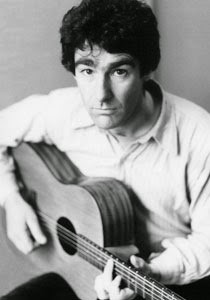
Sound familiar? You’ve listened to versions recorded by folkie Nic Jones as “Ten Thousand Miles,” as well as by Joan Baez, Mary Chapin Carpenter, Marianne Faithfull and more.
“Fair-thee-well” is flat-out wrong. Don’t use it.
Heroine/Heroin. Lately, “heroine addicts” are turning up in way too many novels. These are not readers addicted to the DC Comics heroines.
But drug users craving China white are “heroin addicts.”
Pored/Poured. Way too many people have been “pouring” over books. All that water ruins the pages. It’s easier if you “pore” over your books. 
Ring/Wring. “I could just ring her little neck.” Maybe she was wearing jingle bells. But I think he really wanted to “wring” her neck, which would make her bawl. Those Ws are nothing but trouble.
Rite/Right: “A tattoo is a right of passage,” the author wrote. Wrong. A tattoo is a “rite” of passage. Got that right?
Good luck, writers. Go and sin no more.







